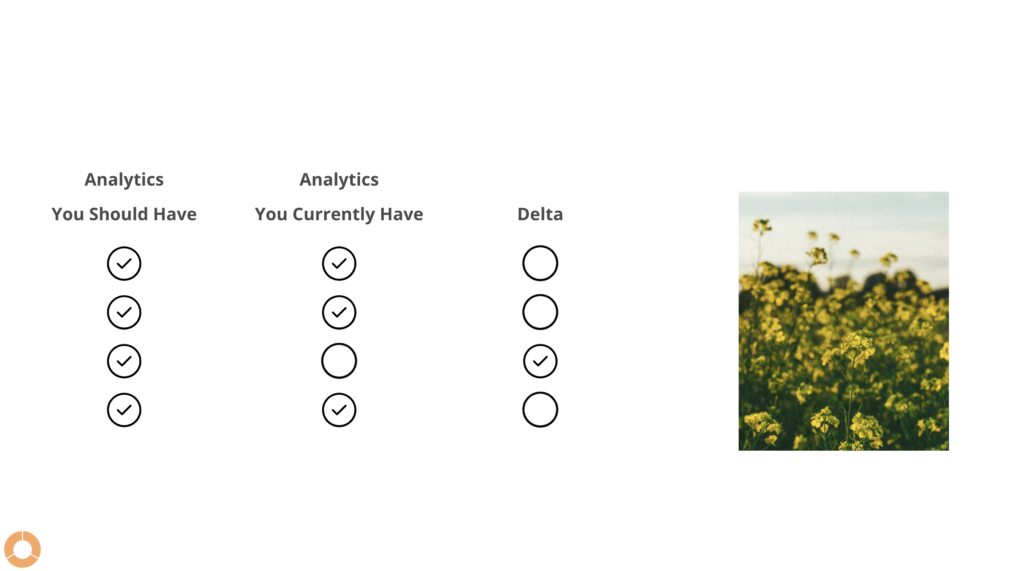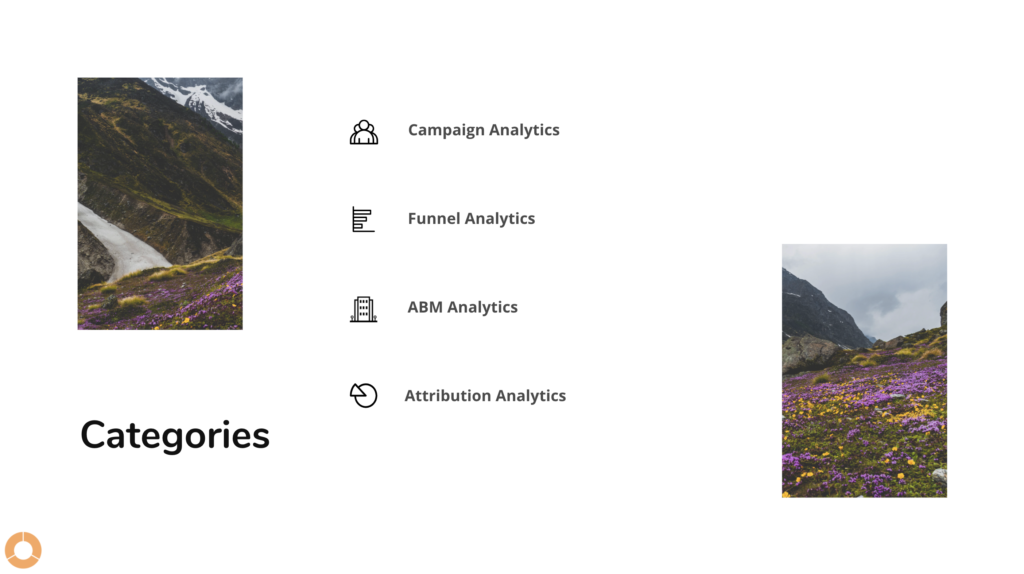Sometimes I get asked if I can take a look at a company’s current set of marketing dashboards or reports and tell them if they’re missing something or could be doing something better.
I’ve felt this fear of “am I missing something?” myself in the past. When you’re in the weeds of providing metrics for a team it’s often easy to forget to step back and look at the full landscape of what you’re doing and consider what you could be doing instead.
One of the recent projects that I completed was an “audit” of a company’s marketing analytics systems. I’ll write more about the practice of doing an “analytics audit” later, but one of the things I realized I needed to write down was what I consider to be a list of analytics capabilities that any B2B company should have. That way, during the audit I could say – here’s a list of analytics that you should have and here’s what you actually have or actually use and therefore here’s the delta, and therefore let’s work to fix that.

And yes, if you make a list that’s detailed enough then it’ll vary significantly from company to company – based on how big the company is, how mature it’s analytics team’s capabilities, what tools they have, how metrics driven their leadership team is, and so on (all topics worthy of long write-ups on their own!)
But what I’m looking for here are high-level categories – something I could use to bucket the analytics into so I can refer back to this list and make sure I’m not missing any big categories of metrics I should be providing to my team.
Here are the categories I came up with based on my own experience of working with B2B companies over the years:
- Campaign Analytics
- Funnel Analytics
- ABM Analytics
- Attribution Analytics

So what sort of stuff is in each of these categories?
Campaign Analytics
These are campaign or program level metrics that indicate the level of success in executing the campaign. I would say MOST of what normal people think of as “marketing analytics” is in this category. Most of the vendors that help execute these campaigns have extensive dashboards that show a ton of analytics in this category.
Questions they answer:
- How’s the “XYZ” campaign going?
- Are people engaging with our campaigns?
- How much are we spending on marketing?
Types of metrics
- Mostly engagement metrics:
- Website: visits, avg time spent, bounces, form conversions, landing page testing
- Advertising: Impressions, clicks, conversions
- Email: opens, clicks, clickthough rates
- Webinar: registrations, attendance, etc
- Event: RSVPs, attended
- Social: clicks, hearts, thumbsups, etc
- Other campaign/tactic level metrics
- Spending/costs
- Marketing budgets and actual spending by campaign
- Cost per metrics: cost per lead, cost per customer, etc
Funnel Analytics
These are metrics that focus on central difficulty in B2B marketing – which is that it takes a long time between a marketing campaign and revenue. So marketers have come up with all sorts of milestones along the way – like “marketing qualified” or “sales qualified” leads, which all lead to eventual conversations and meetings, and deal making before a sale. Tracking all this data – how our prospects become customers is a crucial part of measuring the effectiveness of sales and marketing. Once a company gets good at this sort of modeling, they are able to reverse engineer the process to estimate the level of effort, resources and time it takes to get a customer.
Questions they answer:
- How many leads do we need this quarter to make our sales goal?
- What’s the average time between the first sales meeting and a sale?
- What was the conversion rate of MQLs to SQLs?
Types of metrics
- # of Leads, MQLs, SALs, SQLs, Meetings, Demos, Opps, Customers, etc
- By campaign, by month, over time, etc.
- For each stage, the 3 V’s:
- Volume, Velocity and ConVersion Rate
- Cohort Analysis
ABM Analytics
I’ve really become an ABM convert since working at Engagio. We even wrote a whole book (Clear and Complete Guide to ABM Analytics) that covers ABM analytics in detail. But the basic idea here is that B2B deals are done between two organizations (by definition!) and therefore all metrics and analytics are rolled up by Accounts. Rather than focusing on specific people (“Marketing Qualified Leads”), we focus on the specific buying groups within organizations (“Marketing Qualified Accounts”). Rather than having an open funnel and trying to get everyone to buy your products, we focus on a specific set of “target accounts” and then analytic’s job is to track how those accounts are engaging and becoming customers.
Questions they answer:
- How effective are our ABM programs?
- What’s going on with our Target Account List?
- Which accounts should we focus our sales efforts on?
Types of metrics
- Accounts by level of recent engagement
- Account funnel stages (New Target Account -> MQA -> Opp -> Customer)
- For each stage, 3 V’s: Volume, Velocity and ConVersion Rate
- Account list activation rates
- Campaigns/tactics effective at driving account engagement
Attribution Analytics
Attribution has been a mainstay in B2B analytics because it’s one of the keys to answering a core existential question for marketing: which marketing efforts produce the best business results? The answers to these types of questions come in many shapes and sizes: from a careful tracking of lead sources to complex multi-touch attribution and regression modeling.
Questions they answer:
- What’s working in marketing?
- Which marketing/sales campaigns contributed the most to this deal?
- Which marketing/sales efforts should we do more of?
Types of metrics
- Campaign Influenced Pipeline and Revenue
- Models: FT, LT, Equal Split, Time Decay, Machine Learning, etc
- Campaign ROI
- Compares spend vs influenced pipeline/revenue, ie “for every $1 spent in marketing, we created $3 in revenue”
- Revenue/Pipeline Attribution by Campaign/Channel/Content/Tactic
- Marketing Channel Optimization Analysis
So with these categories I can now approach any team and review existing efforts and evaluate them based on maturity of the org, the type of questions they are asking and their ability to execute in delivering the metrics on a consistent and timely basis.
Questions for you
Did I miss any big categories?
How do you guys carve out metrics in your heads?
What other resources are helpful here? Any guides/frameworks that have been helpful to you?

